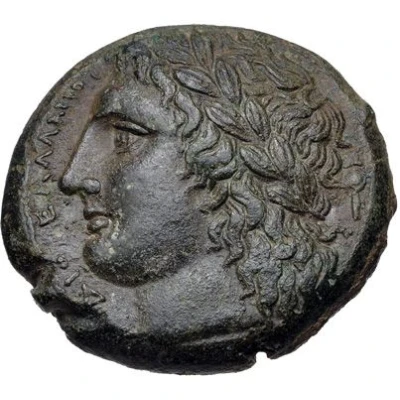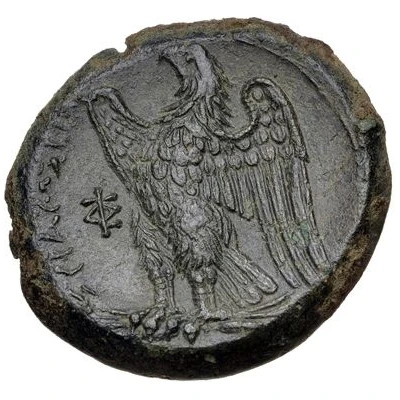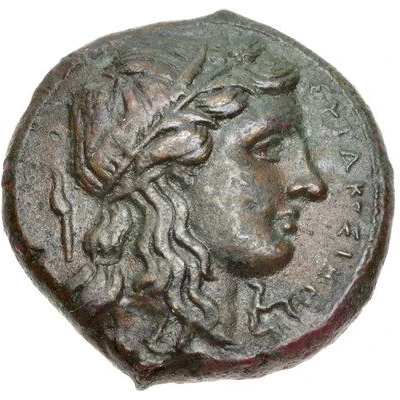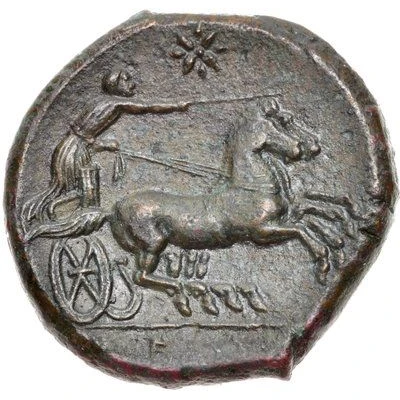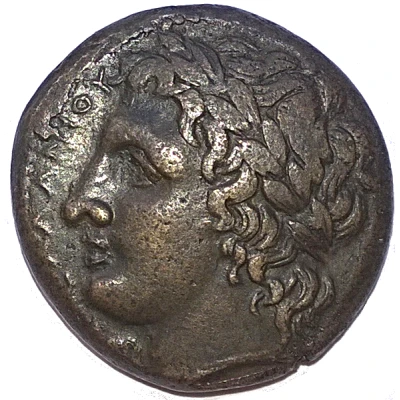
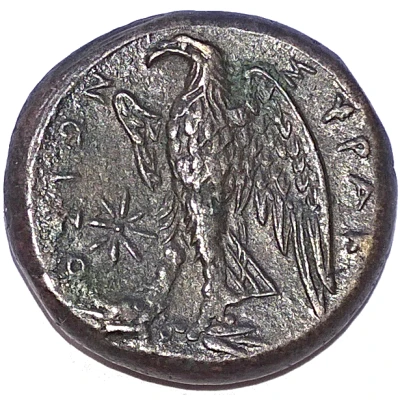

© EPHESE
Litra - Hiketas 287 BC - 278 BC
| Copper | 11.14 g | 23 mm |
| Issuer | Syracuse (Sicily) |
|---|---|
| Tyrant | Hicetas (Ικέτας) (289 BC - 280 BC) |
| Type | Standard circulation coin |
| Years | 287 BC - 278 BC |
| Value | 1 Litra |
| Currency | Litra |
| Composition | Copper |
| Weight | 11.14 g |
| Diameter | 23 mm |
| Shape | Round (irregular) |
| Technique | Hammered |
| Demonetized | Yes |
| Updated | 2024-10-10 |
| Numista | N#67315 |
|---|---|
| Rarity index | 90% |
Reverse
Eagle standing on a lightning bolt to the left, wings outstretched. In the left and right fields, the ethnicity of the city: Syracusion
Script: Greek
Lettering: ΣΥΡΑΚ/ΟΣΙΩΝ
Edge
Rough
Comment
HISTORY:Hiketas, strategist, succeeded Agathokles and became tyrant of Syracuse. He defeated Phintias, tyrant of Agrigento, at Hyblaion, but was in turn defeated by the Carthaginians at Terias and expelled from Thonion in 279 BC, before being driven out of Syracuse and replaced by Pyrrhus (Diodorus Siculus, 21, 16, 6; 18,1; 22, 2, 1; 7, 2-3); [KP. 1145, lines 17-49].The choice of Zeus Hellanios is not insignificant. Hiketas resorted to this iconography at a time when mercenaries, the Mamertines, had crossed the Straits of Messina and seized the city. The god became a prophylactic bulwark against the invaders. Carthage at the dawn of the 3rd century BC was still a potential danger. These events prompted the Epirote intervention of Pyrrhus, who presented himself as a recourse and defender of the island's Greeks against the double danger of Italy and Carthage.
Interesting fact
The Litra - Hiketas coin features a unique combination of two different animal symbols on its obverse and reverse sides. The obverse side depicts a dolphin, which was a common symbol of the ancient Greek city-state of Syracuse, while the reverse side features a stag, which was a symbol of the goddess Artemis. This combination of symbols represents the city's connection to both the sea and the land, as well as its cultural and religious ties to the ancient Greek world.
